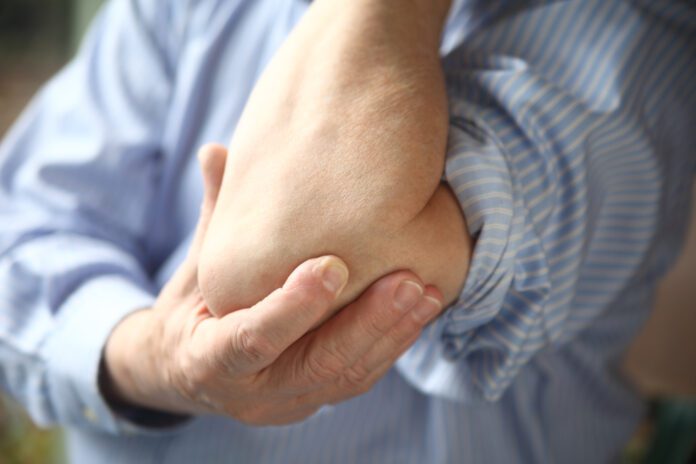Overview
Bursitis is the swelling and irritation of a bursa. A bursa is a fluid-filled sac that acts as a cushion between muscles, tendons, and bones.
Commonly Associated With
Student’s elbow; Olecranon bursitis; Housemaid’s knee; Prepatellar bursitis; Weaver’s bottom; Ischial gluteal bursitis; Baker’s cyst; Gastrocnemius – semimembranosus bursa
Cause
Bursitis is often a result of overuse. It can also be caused by a change in activity level, such as training for a marathon, or by being overweight.
Other causes include trauma, rheumatoid arthritis, gout, or infection. Sometimes, the cause can’t be found.
Bursitis commonly occurs in the shoulder, knee, elbow, and hip. Other areas that may be affected include the Achilles tendon and the foot.
Symptoms
Symptoms of bursitis may include any of the following:
- Joint pain and tenderness when you press around the joint
- Stiffness and aching when you move the affected joint
- Swelling, warmth, or redness over the joint
- Pain during movement and rest
- Pain may spread to the nearby areas
Exams & Tests
The health care provider will ask about your medical history and perform a physical exam.
Tests that may be ordered include:
- Laboratory tests to check for infection
- Removing fluid from the bursa
- Culture of the fluid
- Ultrasound
- MRI
Treatment
Your provider will talk to you about a treatment plan to help you resume your normal activities, including some of the following tips.
Tips to relieve bursitis pain:
- Use ice 3 to 4 times a day for the first 2 or 3 days.
- Cover the painful area with a towel, and place the ice on it for 15 minutes. DO NOT fall asleep while applying the ice. You can get frostbite if you leave it on too long.
- Rest the joint.
- When sleeping, do not lie on the side that has bursitis.
For bursitis around the hips, knees, or ankle:
- Try not to stand for long periods.
- Stand on a soft, cushioned surface, with equal weight on each leg.
- Placing a pillow between your knees when lying on your side can help decrease pain.
- Flat shoes that are cushioned and comfortable often help.
- If you are overweight, losing weight may also be helpful.
- You should avoid activities that involve repetitive movements of any body part when possible.
Other treatments include:
- Medicines such as NSAIDs (ibuprofen, naproxen)
- Physical therapy
- Wearing a brace or splint to support the joint and help reduce inflammation
- Exercises you do at home to build strength and keep the joint mobile as pain goes away
- Removing fluid from the bursa and getting a corticosteroid shot
- As the pain goes away, your provider may suggest exercises to build strength and keep movement in the painful area.
In rare cases, surgery is done.
Source
Courtesy of MedlinePlus from the National Library of Medicine



